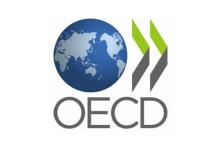Resource information
In light of the urgency for policy action to address climate change, this report provides the first detailed global catalogue of targets and policies for mitigating greenhouse gas emissions in the Agriculture, Forestry and Other Land Use (AFOLU) sector. It covers 20 countries which collectively account for nearly half of the world’s AFOLU emissions. Most of these countries have recently set targets within their AFOLU sector as part of national climate mitigation strategies and commitments, although these targets are only legally-binding for two countries. However, policies to incentivise emission reductions and achieve these targets still need to be developed. Consequently, policy efforts will need to intensify for the AFOLU sector to contribute effectively to limiting global temperature increases to well below 2°C, and especially to meet the more ambitious 1.5°C target of the Paris Agreement.
This report provides a survey of targets and policies for mitigating greenhouse gas (GHG) emissions in the Agriculture, Forestry and Other Land Use (AFOLU) sector for twenty countries. These countries cover six global regions: Europe (France, Ireland, the Netherlands, and the European Union), North America (Canada, the United States), South America (Brazil), Oceania (Australia, New Zealand), East and South East Asia (The People’s Republic of China ‒ henceforth “China” ‒, Indonesia), and Sub-Saharan Africa (Ethiopia, Mali, Namibia, Nigeria, Benin, Burundi, Chad, Comoros, Côte d'Ivoire, Gambia). Within each of the global regions, countries were selected based on a combination of their regional contribution to Agriculture, Forestry and Other Land Use (AFOLU) emissions, and the progress they have made in introducing policies or commitments to reduce these emissions. In 2016, these countries accounted for close to half of the world’s AFOLU emissions, with 42% of global emissions from agriculture and 50% of global Land Use, Land-Use Change and Forestry (LULUCF) emissions (a GHG emission inventory category that corresponds to the FOLU component of AFOLU).
National ambitions and commitments to mitigate AFOLU emissions vary markedly among the countries surveyed. While all of the countries covered in this report commit to national-level GHG emissions reductions in their Nationally Determined Contributions (NDCs), communicated to the United Nations Framework Convention on Climate Change (UNFCCC) under the Paris Agreement, only Indonesia and the surveyed African countries pledge specific mitigation targets for AFOLU emissions in their NDCs. While the setting of sector specific targets in NDCs is important, most of the surveyed countries have also put mitigation policy frameworks or strategies in place to support their NDCs, many of which set targets for AFOLU emissions. More specifically: Mitigation targets in OECD countries are more common for agriculture than LULUCF. Where targets for agriculture have been defined, they are typically lower than the percentage reductions in global emissions needed from the sector to stabilise global temperatures at 2oC, according to findings from multi-sector integrated assessment models. New Zealand and Ireland are presently the only countries with legally binding mitigation targets in agriculture. The surveyed non-OECD countries that pledged sector-specific targets, tend to have more ambitious mitigation targets for AFOLU than OECD countries, which are conditional on external financial support. The few unconditional targets pledged by non-OECD countries are, by contrast, small in percentage terms.
Where they have been developed, national mitigation strategies and frameworks provide some details about mitigation policies. Challenges for measuring AFOLU emissions, which are mainly from diffuse heterogeneous sources, have been an obstacle for the implementation of mitigation policies in the sector. Progress is however being made on the measurement, reporting and verification (MRV) of emissions at both sector and landholder scales.
Among the mitigation policies in AFOLU that have been implemented, there are very few examples of national-level market-based instruments to incentivise the mitigation of the major emission sources in the sector. All national policies that apply the “polluter pays principle” via market-based instruments, such as carbon taxes or emission permits, presently exclude AFOLU, with the exception of the New Zealand Emissions Trading Scheme (NZ ETS), which includes the forestry sector. The pricing of farm-level emissions in New Zealand is also scheduled for implementation in 2025. In readiness for this, the reporting of farm-level emissions will become mandatory by 2024. A final decision on the implementation of farmlevel pricing on emissions will depend on the outcome of a government study into its feasibility. This transition period allows farmers and government agencies to build capacity on the MRV of farm-level emissions prior to the introduction of carbon pricing



